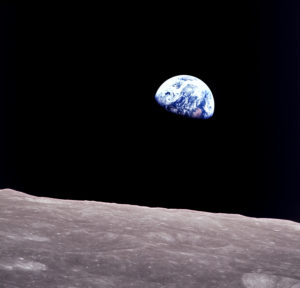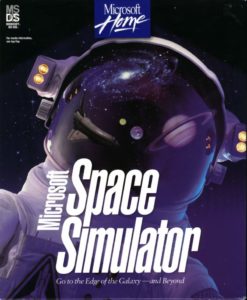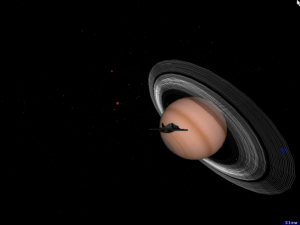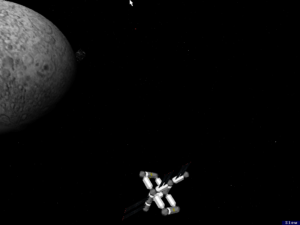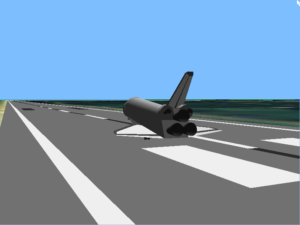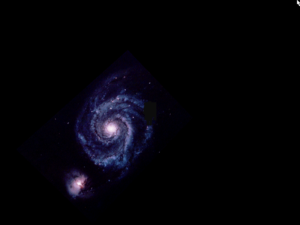No one regards what is before his feet; we all gaze at the stars.
— Quintus Ennius, circa 200 BC
It had been one hell of a year for the United States and most of the rest of the Western world — a year of rampant chaos and conflict at home and abroad, when the very foundations of democratic society seemed on the verge of crumbling to dust. In the course of twelve months, a brutal war with no prospect of ending had escalated to an unimaginable degree, a fractious nation’s most prominent civil-rights leader and one of its presumptive presidential candidates had been assassinated, and the streets had burned with radical and reactionary violence. And there had been a pandemic to boot, an unusually virulent flu virus responsible for an estimated 100,000 deaths in the United States alone.
And then, at the end of it all, human beings orbited another world. Apollo 8 slipped the surly bonds of Earth on December 21, 1968. Not quite three days later, on Christmas Eve, it entered Lunar orbit.
Astronauts Frank Borman, Jim Lovell, and William Anders sent home pictures of the Moon from close up to mark this momentous event. But the photographs they took that resonated the most were actually those of the Earth, revealed from 240,000 miles away to be the tiniest of islands in the hostile ocean of the cosmos. The straight-laced pilots and engineers inside the spacecraft were the farthest thing from poets, but they rose to the occasion on this enchanted evening. As millions of people all over the Earth gazed at their planet — at their desperately fragile-looking home — flickering there on their television screens, the astronauts read aloud from the Book of Genesis. At that moment, it didn’t matter whether you were a believer or not; those ancient words echoing down through time transcended religious dogma — transcended, dare we say it, religion itself.
In the beginning God created the heaven and the earth.
And the earth was without form, and void; and darkness was upon the face of the deep.
And the Spirit of God moved upon the face of the waters. And God said, Let there be light: and there was light.
And God saw the light, that it was good: and God divided the light from the darkness.And God called the light Day, and the darkness he called Night. And the evening and the morning were the first day.
And God said, Let there be a firmament in the midst of the waters, and let it divide the waters from the waters.
And God made the firmament, and divided the waters which were under the firmament from the waters which were above the firmament: and it was so.
And God called the firmament Heaven. And the evening and the morning were the second day.And God said, Let the waters under the heavens be gathered together unto one place, and let the dry land appear: and it was so.
And God called the dry land Earth; and the gathering together of the waters called he Seas: and God saw that it was good.
Mission Commander Borman closed the proceedings just before the spacecraft swung around to the dark side of the Moon and lost contact with home: “And from the crew of Apollo 8, we close with good night, good luck, a merry Christmas, and God bless all of you — all of you on the good Earth.”
Although my editing process means it will be a couple of weeks yet before you read these words, I’m writing them between the Christmas and New Year’s of 2020, a natural time for contemplation and stock-taking. And we certainly have plenty to contemplate: 2020 was also one hell of a year, arguably the most cataclysmic in the Western world since 1968. The last twelve months have been marked by a worldwide pandemic which has altered all of our lives immeasurably, combined with worldwide demands for racial justice that are, one might say, the business that was left unfinished after Martin Luther King’s assassination. The world around us today looks completely different from the one we knew 365 days ago, and it’s not clear when or even whether the Old Normal will return.
But alas, there was no grace note like Apollo 8 to close this year and help us to put things in their proper perspective. Back in 1968, we firmly believed that this year’s most memorable Christmas greeting might come from astronauts near Jupiter or Saturn, but the reality is that a human being hasn’t left Earth orbit since 1972.
Nevertheless, some sort of perspective is sorely needed after a year like the one we’ve just experienced. For better or for worse, we’re living an ever-increasing proportion of our lives virtually. So, perhaps we can find a way to see a bigger picture that way. Perhaps the time is right to talk about Microsoft Space Simulator.
Space Simulator was the brainchild of an enigmatic fellow named Charles Guy, who didn’t give interviews during his lifetime and who died young from cancer in 2004, thus complicating the work of writers like me immeasurably. Born in 1961 in Indianapolis, Indiana, he attended the University of Purdue, but dropped out when his expertise in 3D graphics won him a job at subLogic in Champaign, Illinois, the maker of the hugely successful Flight Simulator. Bruce Artwick and Stu Moment, the company’s founders, first brought Guy on to help Artwick with the programming burden as they ported their flagship product to more and more platforms.
Soon, however, Guy got a project of his own: he was placed in charge of Jet, a simulation of the F-16 and F/A-18 fighter jets. As they had done with Flight Simulator, subLogic ported and supported Jet for years after its initial release in 1985, keeping Guy plenty busy. But the Jet line ended in 1989, when subLogic effectively split into two separate companies amidst lawsuits and recriminations, with each of the companies being led by one of the two erstwhile founders.
Guy backed the right horse; he left subLogic to join Artwick’s appropriately named Bruce Artwick Organization, which had walked away with the crown jewel of the old subLogic simulation empire: the contract to make Microsoft Flight Simulator for MS-DOS and the Macintosh. He worked on those programs for a brief while, then convinced Artwick and Microsoft to let him make Space Simulator.
The fact was, Guy’s bona fides as an expert in winged flight weren’t quite up to those of Bruce Artwick or Stu Moment. He had duly attempted to qualify for a pilot’s license back in the 1980s, thus conforming to what had become something of a subLogic tradition, but his airplane nearly spun out of control when he was practicing stalls one night. “He managed to recover, but never flew a plane again after that,” remembers a friend.
Guy’s real passion was astronomy. Heaven in the metaphorical and literal sense was one to him: few things moved him more than a clear night sky full of stars. It had all begun when he was fifteen years old and happened to look up on just such a perfect night:
What I saw was so intense that it frightened me. I had to look down at the ground. It was too much. Slowly, I built up the nerve to look at it more and more with my naked eyes. And eventually, I got to the point where I couldn’t stop looking at it. I became more and more obsessed with it.
The scale of it was frightening to me. I felt like I was standing on a pinpoint, oppressed by the size of this thing. It really did frighten me, but I found that this fear really isn’t like normal fear. It is the kind of fear that is respectful, although it becomes a fear that must be conquered and resolved. It leads toward growth and understanding.
When he talked about stargazing, he did so as if he was actually traveling to the stars he saw through his telescope, as perhaps he was in spirit: “I’ll tell you where I’m headed. I’m headed to Sagittarius. I’ll often go to M22, then M8, then M17. I like to go south to north, hitting all the H2 regions, and the good globular and open clusters. There are a lot of them in Sagittarius.” It was only natural for him to make a game where you could take just the sorts of trips he was already taking in his mind’s eye.
Space Simulator is a game of two halves — assuming, that is, that we can agree to call a piece of software with no goals and no real rules a game at all — and they don’t always fit together perfectly. On the one hand, Space Simulator is exactly what you might expect from its own name and that of the development studio behind it: a serious simulation of spaceflight. You can fly historical craft like the Apollo Command and Lunar Modules, the Space Shuttle, or even the Manned Maneuvering Unit used by Shuttle astronauts for spacewalks. Or you can explore farther afield from Earth in one of a variety of theoretical spacecraft of the future. Either way, the experience can be as realistic as you want it to be. You can use the program’s many available shortcuts to slew your way around the galaxy without ever touching a thruster control for yourself, or you can sit down with pen and paper and plot your own orbits and trajectories; doing so requires far more higher-math skills than I possess, but I’m told that, if you have the requisite skills, you’ll find the program to be an entirely consistent, entirely realistic environment in which to play NASA navigator. Of course, at some point you’ll have to bite the bullet and embrace some of the simulator’s shortcuts, as some of the voyages you can plot for yourself will take billions of years if you insist on making them in real time.
The other side of Space Simulator — the side nearer to Charles Guy’s heart, one senses — are the actual places you can fly or slew your way to. In fact, Space Simulator boasts what must be as large a virtual “world” as has ever been built into a game, encompassing the full extent of the Milky Way Galaxy and some distance beyond. (“Can you believe that we’re going to try to put all of this inside a computer?” exclaimed Guy spontaneously one evening under one of his beloved clear night skies.) You can visit the stars and planets and moons of our solar system or the ones that are theorized to exist in others, and just gaze in wonder or make pictures or even videos of your discoveries, knowing that what you see and record is as accurate as the state of the science of astronomy during the early 1990s could make it. All of it is presented in Super VGA graphics at a resolution of 800 X 600, meaning it still looks pretty good today. The sense of wonder was and still remains strong with this one.
Indeed, a palpable spirit of starry-eyed idealism still clings to Microsoft Space Simulator all these years later. Defying their 1990s reputation as soulless dirty tricksters — a reputation which was well-earned in many other contexts — Microsoft worked enthusiastically with Charles Guy and the rest of the Bruce Artwick Organization for some three years to stuff the entirety of a galaxy onto three floppy disks. Grant Fjermedal, a journalist who was there through much of the process, shares this anecdote about the arrival of an early version at Microsoft, one which for the first time let you explore the galaxy using a joystick.
The evening after it arrived, in March of 1993, program manager Jon Solon carried [the] disks home and loaded it on his machine. He flew through space until after midnight, chasing down planets and orbiting the Moon, excited about being able to leave the keyboard controls behind in favor of the more fluid joystick. Jon, who had been program manager for three versions of Flight Simulator, compared the experience to the first time he took off from Chicago’s Meigs Field, circled the skyscrapers, and successfully landed.
All the next day at Microsoft, people were hunting through storage rooms (and through the offices of their pals) looking for joysticks that weren’t being used. There were those who flew, and those who enthused. People were being flagged down and dragged into offices: “I’ve got to show you something — watch this!” It was a day when the door seemed to open wider than ever before.
Far from limiting the scope of the simulation, Jon Solon and the others at Microsoft encouraged Charles Guy to expand it. It was Solon, for example, who insisted that it ought to be possible to land your spacecraft on the planets you encountered, in order to see their diverse environments firsthand.
When the finished Space Simulator finally shipped in late 1994, Microsoft got behind it in a big way. The manual they included in the box was a minor wonder in itself, a patient introduction to the program’s complexities in more than 200 friendly, well-written, eminently approachable pages; few to no other software publishers would have had it in them to produce a manual like this, for any sort of program. In addition to a lavish advertising campaign positioning Space Simulator as the natural heir to the 3-million-selling Flight Simulator, Microsoft published not one but two strategy guides through their own press, and granted Sybex Books special inside access so they could publish a third. (These three books nicely encompassed the full range of Space Simulator‘s personality: the Sybex book was the hardcore one, its second half chock full of equations and subsection titles like “Geometric Properties of All Conic Sections”; meanwhile one of the Microsoft books was most interested simply in helping you to take in the galaxy’s sights, while the third aimed for a point somewhere in between the other two.)
With support like this behind his creation, an ebullient Charles Guy was moved to exclaim that Space Simulator “might bring on a whole new social revolution!” Or a “spiritual revolution,” as Grant Fjermedal put it: “Perhaps a tool to simulate even a part of the vastness of space will lead us to ponder what that vastness might mean for humanity, as we glide through the soft darkness of space, clutching hold of our garden planet in orbit around our gracious middle-aged Sun.” For truly Space Simulator contains multitudes. One can be merrily slewing through the galaxy, only to look down and realize that 40 years, 400,000 years, 4 million years have passed since one left Earth. Through Space Simulator, we can almost glimpse infinity. The contemplation of such enormity, like that of a single grain of sand, can be a source of both existential terror and spiritual comfort. “It was while traveling the stars at a time-scale setting of 68 years per second,” writes Fjermedal, “that I most fully understood the vastness of our galaxy and the brevity of our lives.”
Unfortunately, the public proved for once resistant to Microsoft’s much-vaunted marketing acumen when it came to Space Simulator. In retrospect at least, the problems with the product as a commercial proposition aren’t hard to identify. It was the ultimate in “make your own fun” games, even more so than a so-called “software toy” like, say, SimCity — or for that matter Flight Simulator. When you start the game, you find yourself parked in orbit around Earth. From there, it’s entirely up to you to decide what you want to do and how you want to do it by digging through a cryptic nest of menus; Space Simulator absolutely demands that you read that brilliant manual through, carefully and completely, to get much of anywhere with it. And even after you do so, it demands that you be the type of person who considers unguided, goal-less exploration fun. Space Simulator does have support for “missions,” which are exactly what they sound like they would be, even to the point of including a scoring system, but this capability is weirdly under-utilized. The game includes just two of them out of the box: one covering Apollo 17, the final mission to the Moon, and the other covering a typical Shuttle mission. One suspects that Microsoft envisioned a robust Space Simulator aftermarket that would have included more “mission disks” among other products, much like the many scenery disks which were released for Flight Simulator.
But sadly, sales of Microsoft Space Simulator never justified any such further releases. The dedicated gaming press, and dedicated gamers in general, didn’t know quite what to make of it, even as it was far too demanding for more casual users. Of course, Microsoft Flight Simulator was another willfully cerebral, esoteric, goal-less experience that defied all of the conventional wisdom about what made a hit computer game, and yet managed to become the best-selling computer-gaming franchise of its generation. Why was Space Simulator so different? Perhaps its spaces were just too vast, its conceptual grandiosity too intimidating. It’s easier to get a handle on the idea of flying a small plane from airport to airport, even if there isn’t much point to it beyond the fantasy of being up there in the wild blue yonder, than it is to conceive and plan a voyage to Polaris in a Bussard ramjet. Maybe the idea of a voyage of a million years simply strained too many imaginations past the breaking point.
Whatever the reason for its commercial failure, Microsoft Space Simulator went quietly out of print within a couple of years, even as Flight Simulator continued to go strong. Charles Guy left the Bruce Artwick Organization shortly after it became clear that his passion project would not be fomenting any social revolutions. He bounced around the games industry in various programming roles for the rest of his life, but never got a chance to helm a game of his own of any sort again, much less one with the scope of this one.
Space Simulator is an oddly forgotten artifact today; you’ll be hard-pressed to find any online discussion of it at all. And that’s a shame, as it possesses at least two sources of enduring interest. In one sense, it’s a fascinating product of its time, that heady cusp of the second, ultimately more enduring home-computer boom, when the multimedia capabilities of the latest machines were inspiring more big companies than just Microsoft to take a flier on unabashedly intellectual, crazily idealistic software.
In another sense, though, Space Simulator transcends its time. No one since Charles Guy has attempted to make a piece of software quite like this one. There are certainly technical simulations of spaceflight that are even more detailed than Space Simulator, just as there are planetarium programs to let you do virtual stargazing with the benefit of an additional quarter-century of astronomical discoveries. Yet no one else has given you a spacecraft and then just set you loose to go explore the natural wonders of our galaxy with it, thereby giving you a more embodied sort of window onto our staggeringly magnificent and terrifyingly immense universe than any planetarium can hope to create. Computer games are not known for their ability to provoke spiritual awakenings, but if any one of them can, perhaps it is this one. Stare, if you dare, into the vastness, and see that it is good. A little perspective is never a bad thing.
A Microsoft Space Simulator Gallery
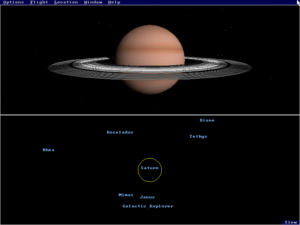
Saturn, possibly the most beautiful of all the planets of our solar system — after Earth, that is. While we watch the planet itself rotate in the top window, we watch some of the more prominent of its dozens of moons orbit in the bottom window. You may find that you can spend a surprisingly long time just watching their clockwork motion.
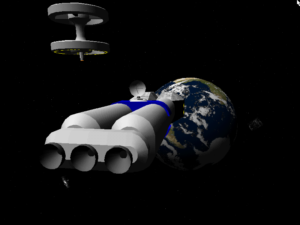
Returning to Earth in the Galactic Explorer, a spacecraft obviously modeled after the Discovery from 2001: A Space Odyssey. In fact, given that the space station before us betrays the same influence, we can almost imagine this scene as a lost frame from Stanley Kubrick’s 1968 film.
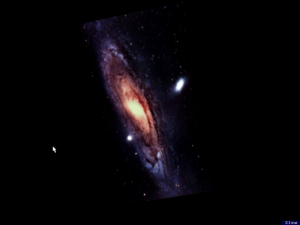
The Andromeda Galaxy, seen from well beyond the border of our own Milky Way Galaxy. The programmers among you will appreciate what an awesome feat it is to devise a coordinate system able to pinpoint a location 2.5 million light years from Earth as well as it can a single runway in Florida.
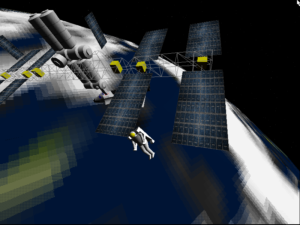
The dream of constructing a Space Station Freedom in Earth orbit was still alive when Space Simulator was under development. The plan to do so, first mooted by President Ronald Reagan in his State of the Union Address in 1984, was scrapped completely by the end of the 1990s.
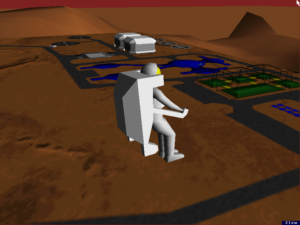
In yet another scene from a future that’s been inordinately slow in arriving, we soar above a colony on Mars.
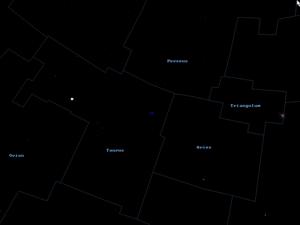
Space Simulator can also be used as a planetarium, showing a view of the sky from any position on Earth at any time you wish.
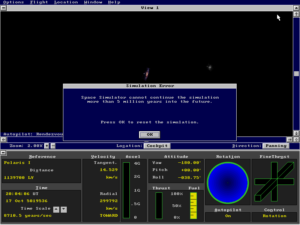
This error message appears surprisingly often as you explore, providing as good an illustration as any of the sheer scale of the simulation.
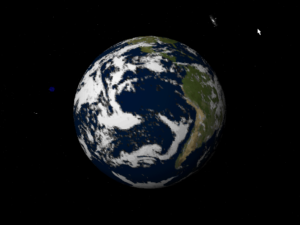
Our one and only home in a beautiful but inhospitable universe. May we be better stewards of it after 2020 than we’ve been in the years prior…
(Sources: the books Microsoft Space Simulator: The Official Strategy Guide by Rick Barba, Adventures in Space Simulator: The Ultimate Desktop Astronaut’s Guide by Grant Fjermedal, and Space Simulator Strategies and Secrets by Nick Dargahi; Computer Gaming World of December 1994; Computer Play of November 1988. The “Talk” page of the Wikipedia entry on Microsoft Space Simulator proved one of my few sources of personal information on the enigmatic Charles Guy.
Microsoft Space Simulator has been out of print for many years. Therefore I’ve put it up here for download, packaged so as to be as easy as possible to get running under DOSBox on a modern Windows, Macintosh, or Linux system. Happy exploring! May you find the perspective you crave.)
